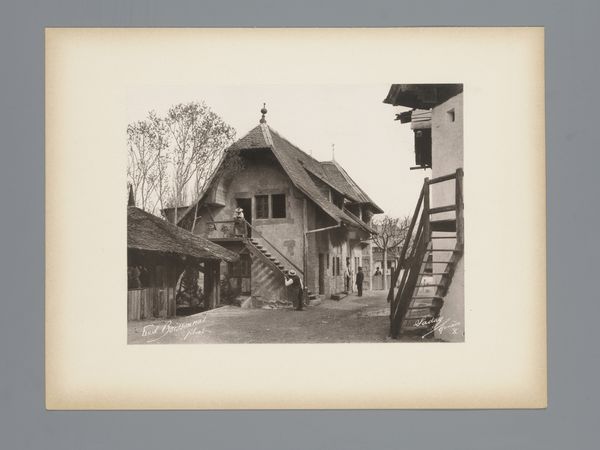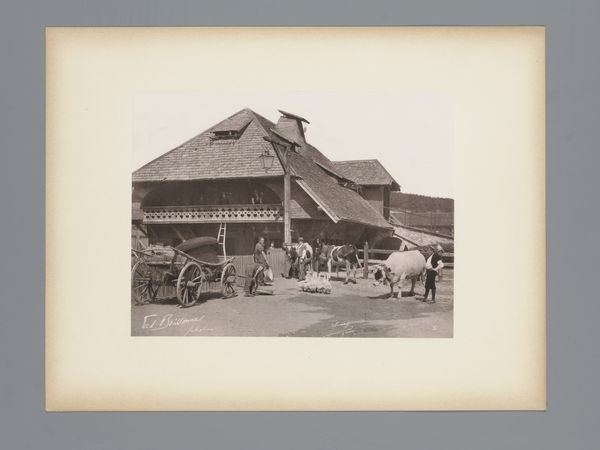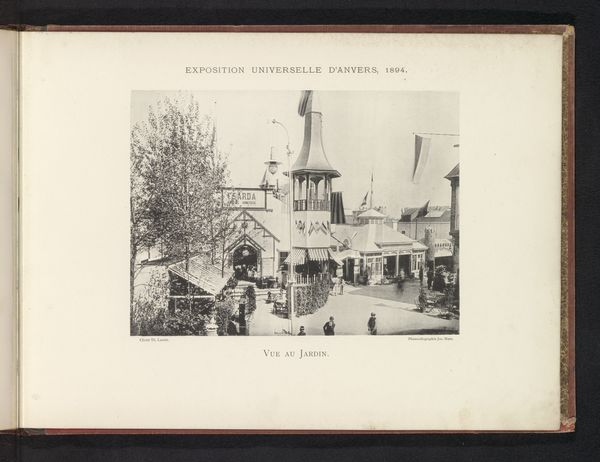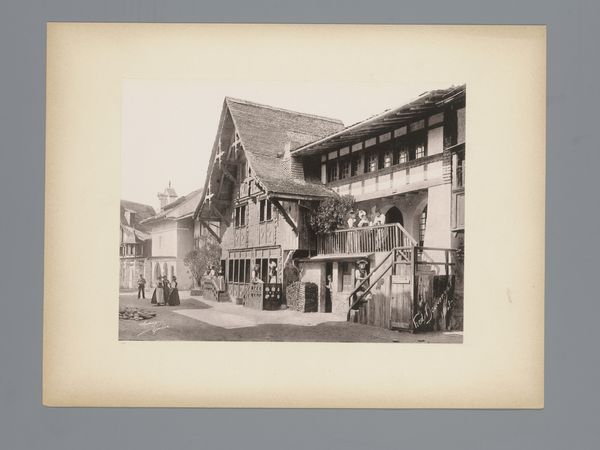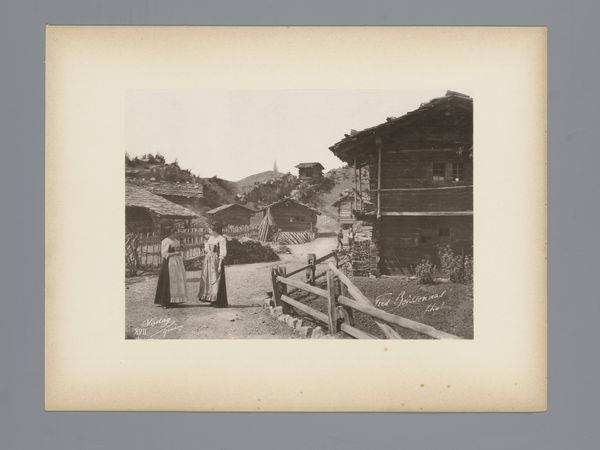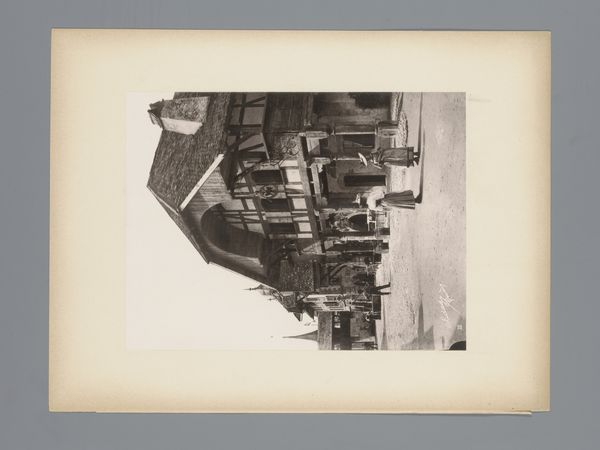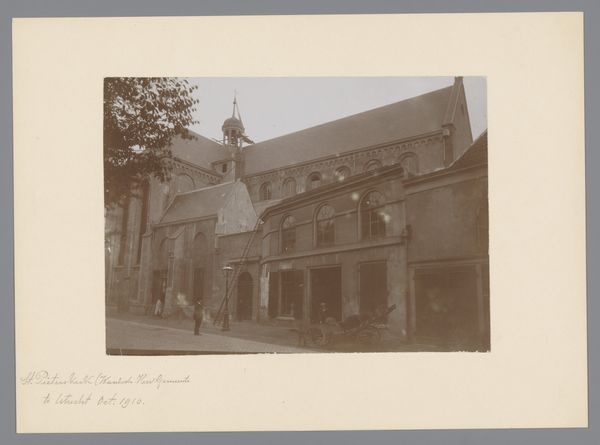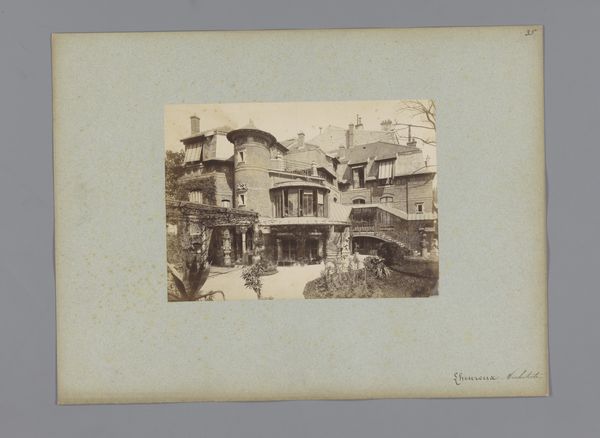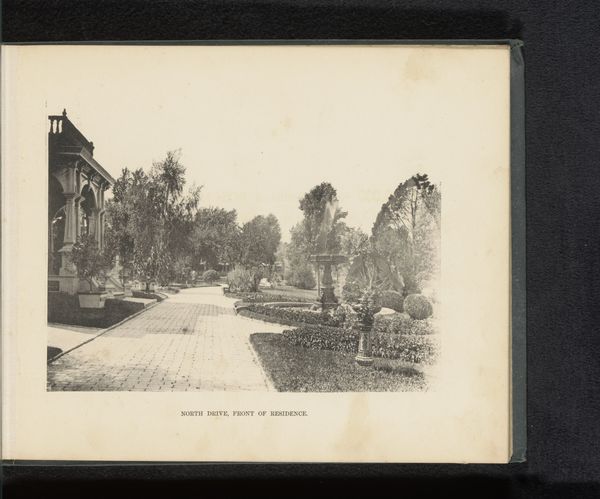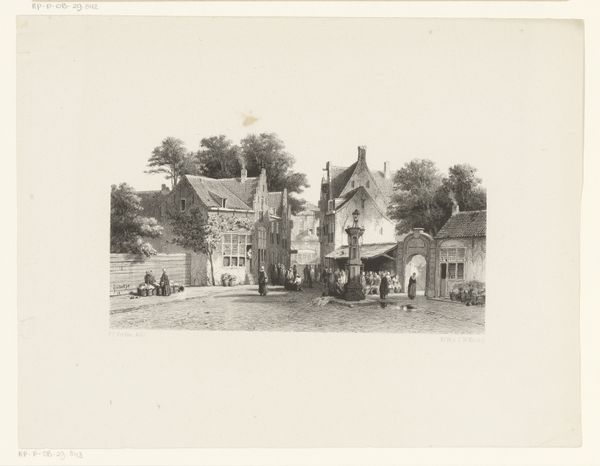
Dimensions: height 157 mm, width 218 mm
Copyright: Rijks Museum: Open Domain
Frédéric Boissonnas made this photographic print, "Dorpsgezicht in Zwitserland," using the traditional photographic process. The sepia tones and the way the light falls across the wooden structures give the image a tactile quality, almost like a wood engraving. Boissonnas was clearly interested in the textures of the vernacular architecture, the rough-hewn timbers of the buildings, and the way they sit within the landscape. Photography in this era involved a great deal of labor: preparing glass plates, developing negatives, and making prints, all before mass production. Photography was changing how people saw the world, democratizing image-making, but the hand of the artist was still very much present in the darkroom. Boissonnas was not just recording a scene, but crafting an image that spoke to the cultural significance of rural life in Switzerland. This piece reminds us that photography, like any craft, is a dialogue between the artist, the materials, and the world around them.
Comments
No comments
Be the first to comment and join the conversation on the ultimate creative platform.
